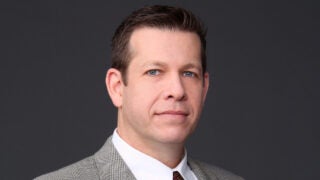
Laguna Niguel fire signals start of a long wildfire season in California
USC experts predict wildfire threat to grow in coming years, but see hope in new mitigation methods.
Wildfires scorched the American West in 2021, leaving death and destruction in their wake. In California alone, Cal Fire recorded 8,835 wildfires that destroyed more than 2.5 million acres cumulatively. The Dixie Fire in Northern California was particularly destructive, charring nearly 1 million acres, over 1,000 structures and killing one person.
A new season has begun and with alarming speed. The Laguna Niguel wildfire in Orange County destroyed at least 20 homes and hundreds of acres of foliage in no time. The continued effects of climate change and especially extreme drought mean wildfire poses a risk year-round, said Bill Deverell, director of the Huntington-USC Institute on California and the West and head of its The West on Fire research project.
Laguna Niguel fire portends a fire season that never ends
“Summer in California no longer means the beginning of fire season. Rather, it means we are about to enter the roughest six or so months of a fire season that never ends,” said Deverell, who is also a professor of history and spatial sciences at the USC Dornsife College of Letters, Arts and Sciences. “Drought and the increasing effects of climate change come together in creating the likelihood — even the certainty — of bigger, hotter, and more catastrophic fires year to year.”
What we need is more fire on the brain.
Bill Deverell, Huntington-USC Institute on California and the West
Deverell noted fire management practices continue to adapt. For instance, prescribed burns help cut the fuel supply to emerging fires. Regardless, the changes will take time to implement, he said. Awareness and continued research on wildfires are essential to addressing the threat.
“What we need is more fire on the brain: We have to talk about it more, we have to study it more, and we have to try to understand it better, even as the ‘fire regimes’ of the American West are changing year to year,” Deverell said.
California wildfires: Downwind smoke presents additional threat to L.A. residents
The destructive capacity of the fire is only one threat. Downwind smoke means the detrimental effects of the fires — smoke and particulates — reach into urban centers, even if the flames don’t. Ed Avol, professor of clinical population and public health sciences at the Keck School of Medicine of USC and expert on smoke toxicity, said the smoke can affect people hundreds of miles from an active fire.
“We often forget that wildfire impacts extend to cities and areas hundreds or more miles beyond the actual wildfire location through downwind smoke,” he said. “The resulting poor air quality can affect your physical, mental and psychological health, so plan in advance for what you might do in case an event occurs where you live or work.”
Avol suggests keeping N95 masks handy and to consider a home air purifier that can filter an amount of air consistent to the size of the room or house you plan to use it. If there is an active wildfire or substantial smoke in your area, he advises: “Reduce your exercise, stay indoors with windows and doors closed, and remember to place damp towels at the base of exit doors and windows.”
Establishing a defensible space is also essential in the event of a nearby fire, according to postdoctoral researcher Rebecca Miller, who works with Deverell on The West on Fire project. Los Angeles isn’t immune from the effects of wildfires, she said, and residents can prepare ahead of time — before a fire has even started near them.
Communities and residents can prepare for wildfires and the possibility of an evacuation by making a plan now.
Rebecca Miller, Huntington-USC Institute on California and the West
“Los Angeles has seen significant structure losses from recent wildfires like the Woolsey Fire in 2018, but residents may also be exposed to high smoke concentrations originating across California or the western United States,” she said. “Communities and residents can prepare for wildfires and the possibility of an evacuation by making a plan now. Cal Fire provides specific tips for how residents can prepare for wildfires at readyforwildfire.org.”



